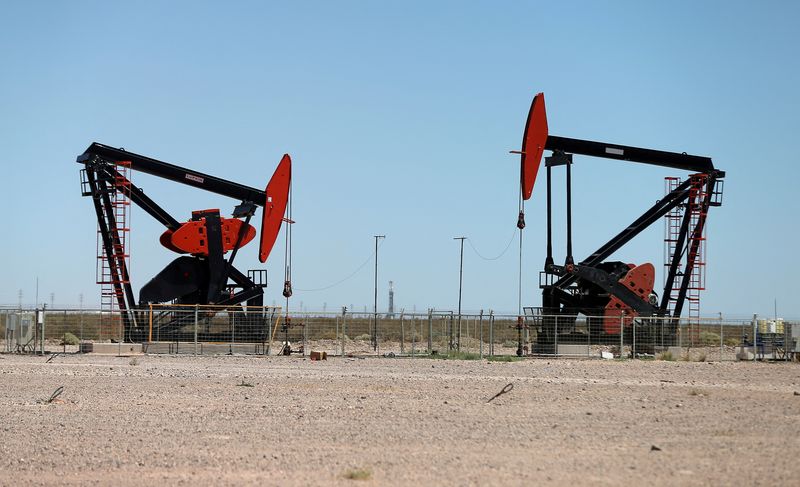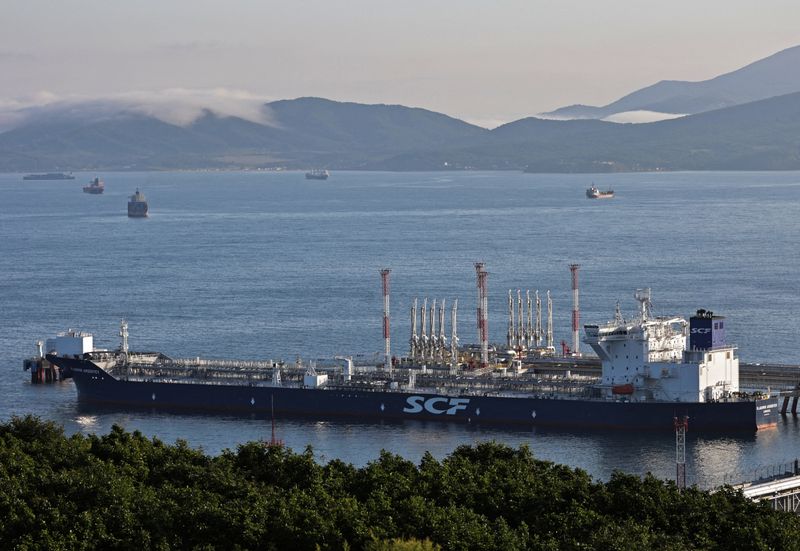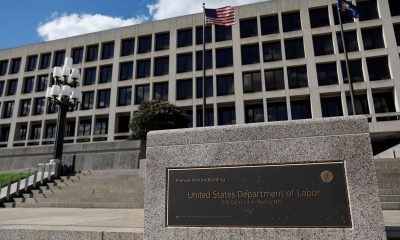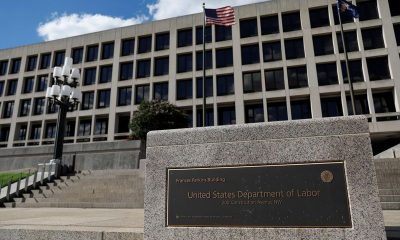Commodities
Exclusive-Russia struggles to collect oil payments as China, UAE, Turkey raise bank scrutiny

MOSCOW (Reuters) – Russian oil firms face delays of up to several months to be paid for crude and fuel as banks in China, Turkey and the United Arab Emirates (UAE) become more wary of U.S. secondary sanctions, eight sources familiar with the matter said.
Payment delays reduce revenue to the Kremlin and make them erratic, allowing Washington to achieve its dual policy sanction goals – to disrupt money going to the Kremlin to punish it for the war in Ukraine while not interrupting global energy flows.
Several banks in China, the UAE and Turkey have boosted their sanctions compliance requirements in recent weeks, resulting in delays or even the rejection of money transfers to Moscow, according to the eight banking and trading sources.
Banks, cautious of the U.S. secondary sanctions, started to ask their clients to provide written guarantees that no person or entity from the U.S. SDN (Special Designated Nationals) list is involved in a deal or is a beneficiary of a payment.
The sources asked not to be named due to the sensitivity of the issue and because they are not allowed to speak to media.
In the UAE, banks First Abu Dhabi Bank (FAB) and Dubai Islamic Bank (DIB) have suspended several accounts linked to the trading of Russian goods, two sources said.
UAE’s Mashreq bank, Turkey’s Ziraat and Vakifbank and Chinese banks ICBC and Bank of China still process payments but take weeks or months to process them, four sources said.
Mashreq bank declined to comment. UAE’s FAB and DIB banks, Turkey’s Ziraat and Vakifbank, China’s ICBC and Bank of China did not reply to requests for comments.
Kremlin spokesperson Dmitry Peskov said payment problems exist when asked about reports that banks in China have slowed payments.
“Of course, unprecedented pressure from the United States and the European Union on the People’s Republic of China continues,” Peskov told a daily conference call with reporters.
“This, of course, creates certain problems, but cannot become an obstacle to the further development of our trade and economic relations (with China),” Peskov said.
U.S. EXECUTIVE ORDER
The West has imposed a multitude of sanctions on Russia after it invaded Ukraine in February 2022. Dealing with Russian oil is not illegal as long as it is sold below a Western-imposed price cap of $60 per barrel.
Russian oil exports and payments for it have been disrupted in the first months of the war but later normalised as Moscow re-routed flows to Asia and Africa away from Europe.
“Problems returned from December after banks and companies have realised the threat of U.S. secondary sanctions is real,” one trading source said.
The source was referring to a U.S. Treasury executive order published on Dec. 22, 2023, which warned it could apply sanctions for the evasion of the Russian price cap on foreign banks and called on them to boost compliance.
It became the first direct warning about a possibility of secondary sanctions on Russia, putting it on par with Iran in some areas of trade.
Following the U.S. order, Chinese, UAE and Turkish banks that work with Russia have increased checks, started asking for extra documentation and trained more staff to make sure deals were compliant with the price cap, the trading sources said.
Additional documents can also include details on the ownership of all companies involved in the deal and personal data of individuals controlling the entities, so that banks can check on any exposure to the SDN list.
In the end of February UAE banks had to rise payment scrutiny as they were asked to provide data to the U.S. correspondent banks and the U.S. treasury if they have transactions that go to China on behalf of a Russian entity, according to one banking source familiar with the matter.
“This meant delays in processing payments to Russia,” one of the sources said.

One source said one payment had been delayed by two months, while another said the delays amounted to two to three weeks.
“It has become tough and not even for the dollar transactions. Sometimes it takes weeks for a direct yuan-rouble transaction to be executed,” one of the traders said.
Commodities
Oil prices on track to snap two-week losing streak

By Ahmad Ghaddar
LONDON (Reuters) -Oil prices rose on Friday, on track to end higher this week after two straight weeks of losses, after a top U.S. official expressed optimism over economic growth and as supply concerns lingered due to conflicts in the Middle East.
futures gained 19 cents, or 0.2%, to $89.20 a barrel at 0927 GMT, and U.S. West Texas Intermediate crude futures rose by 25 cents, or 0.3%, to $83.82 a barrel.
Brent has gained 2.2% so far this week, while WTI is up 0.8%.
U.S. Treasury Secretary Janet Yellen told Reuters on Thursday that U.S. GDP growth for the first quarter could be revised higher, and inflation will ease after a clutch of “peculiar” factors held the economy to its weakest showing in nearly two years.
U.S. economic growth was likely stronger than suggested by weaker-than-expected quarterly data, she said.
Data showed that economic growth slowed in the first quarter, and prior to Yellen’s comments, tremors from an acceleration in inflation had weighed on oil prices as investors calculated that the Federal Reserve would not cut interest rates before September.
The personal consumption expenditures (PCE) price index excluding food and energy rising rose at a 3.7% annual rate after a 2.0% pace in the fourth quarter of 2023, the data showed.
“US GDP growth of 1.6% that … came in under expectations might also be deemed a welcome development confirming the effectiveness of the recent monetary tightening, nonetheless it was the PCE price index that drove sentiment,” PVM Oil analyst Tamas Varga said.
remove ads
.
Elsewhere, supply concerns as tensions continue in the Middle East also buoyed prices early in the session.
Israel stepped up air strikes on Rafah after saying it would evacuate civilians from the southern Gazan city and launch an all-out assault despite allies’ warnings this could cause mass casualties.
Commodities
Gold prices weaken, eye break below $2,300 as rate jitters persist

Investing.com– Gold prices fell in Asian trade on Thursday and were close to breaking below key levels as waning safe haven demand and the prospect of higher-for-longer U.S. interest rates battered the yellow metal.
Bullion prices were nursing a sharp drop from record highs over the past week, as a potential conflict between Iran and Israel did not escalate as markets were fearing. This largely dented safe haven demand for the yellow metal.
Waning safe haven demand left gold vulnerable to headwinds from U.S. rates, given that higher-for-longer rates push up the opportunity cost of investing in bullion.
fell 0.1% to $2,313.62 an ounce, while expiring in June fell 0.6% to $2,325.05 an ounce by 00:26 ET (04:26 GMT).
Strength in the – which remained close to recent five-month peaks, also pressured metal prices.
Gold eyes $2,300 support, more rate cues awaited
Spot prices were now close to breaking below the $2,300 an ounce support level, which could herald more near-term losses for the yellow metal.
But gold’s next leg of movement is expected to be driven largely by more upcoming cues on the U.S. economy and interest rates.
First-quarter U.S. data due later on Thursday is expected to show whether the world’s largest economy remained resilient in the beginning of 2024.
data- which is the Federal Reserve’s preferred inflation gauge- is likely to have a bigger impact on gold, given that it ties directly into the central bank’s outlook on interest rates.
remove ads
.
Hotter-than-expected U.S. inflation readings and hawkish Fed signals saw traders largely price out expectations for a June rate cut- a scenario that presents more near-term pressure for gold prices.
Other precious metals also retreated on Thursday after tumbling from recent peaks over the past week. fell 0.3% to $910.30 an ounce, while fell 1% to $27.078 an ounce.
Copper prices cool further from 2-year highs
Among industrial metals, copper prices fell further from recent two-year highs as weak economic readings and fears of high interest rates somewhat offset optimism over tighter markets.
on the London Metal Exchange fell 0.2% to $9,773.0 a ton, while fell 0.1% to $4.4510 a pound. Both contracts were below two-year highs hit earlier in April, after stricter western sanctions on Russian metal exports pointed to tighter markets.
But this optimism was dulled by top copper producer Chile signaling that state-owned copper miner Coldeco will increase output in 2024.
Concerns over steady demand also weighed after U.S. purchasing managers index data read weaker than expected for April, with the back in contraction territory.
Commodities
Oil steady as US demand concerns balance Middle East conflict risks

By Alex Lawler and Deep Kaushik Vakil
LONDON (Reuters) -Oil steadied on Thursday after settling lower the previous day as signs of retreating fuel demand in the U.S., the world’s biggest oil user, contended with widening conflict risks in the Middle East.
This week’s supply report from the U.S. Energy Information Administration (EIA) on Wednesday showed gasoline stockpiles fell less than forecast while distillate stockpiles rose against expectations of a decline, reflecting signs of slowing demand. [EIA/S]
“It does not exactly give a healthy state of domestic demand in the U.S.,” said John Evans of oil broker PVM, who added that U.S. economic data out later in the day would be important for sentiment. “Oil prices today will not be in the hands of the oil market,” he said.
futures rose 18 cents, or 0.2%, to $88.20 a barrel by 1135 GMT while U.S. West Texas Intermediate crude futures were up 17 cents, or 0.2%, at $82.98.
inventories unexpectedly fell sharply last week, the EIA report also showed, as exports jumped.
The concern about U.S. fuel demand arises amid signs of cooling U.S. business activity in April and as stronger-than-expected inflation and employment data means the Federal Reserve is seen as more likely to delay expected interest rate cuts.
U.S. economic data out later on Thursday includes first-quarter economic growth. Gross domestic product (GDP) likely increased at a 2.4% annualised rate, according to a Reuters survey of economists.
“The current weakness in benchmark prices, after testing above $90 levels, is due to market sentiment refocusing on global economic headwinds over geopolitical tensions,” said Emril Jamil, senior oil analyst at LSEG Oil Research.
remove ads
.
Fighting in the Gaza Strip between Israel and Hamas is expected to expand as Israel may start an assault on Rafah, in the enclave’s south, which may increase the risk of a wider war that could potentially disrupt oil supplies.
Still, oil supply has not been affected as yet and there have been no other signs of direct conflict between Israel and Hamas-backer Iran, a major oil producer, since last week.

 Forex2 years ago
Forex2 years agoForex Today: the dollar is gaining strength amid gloomy sentiment at the start of the Fed’s week

 Forex2 years ago
Forex2 years agoHow is the Australian dollar doing today?

 Forex1 year ago
Forex1 year agoUnbiased review of Pocket Option broker

 Forex2 years ago
Forex2 years agoDollar to pound sterling exchange rate today: Pound plummeted to its lowest since 1985

 Cryptocurrency2 years ago
Cryptocurrency2 years agoWhat happened in the crypto market – current events today

 World2 years ago
World2 years agoWhy are modern video games an art form?

 Stock Markets2 years ago
Stock Markets2 years agoMorgan Stanley: bear market rally to continue

 Economy2 years ago
Economy2 years agoCrude oil tankers double in price due to EU anti-Russian sanctions

































